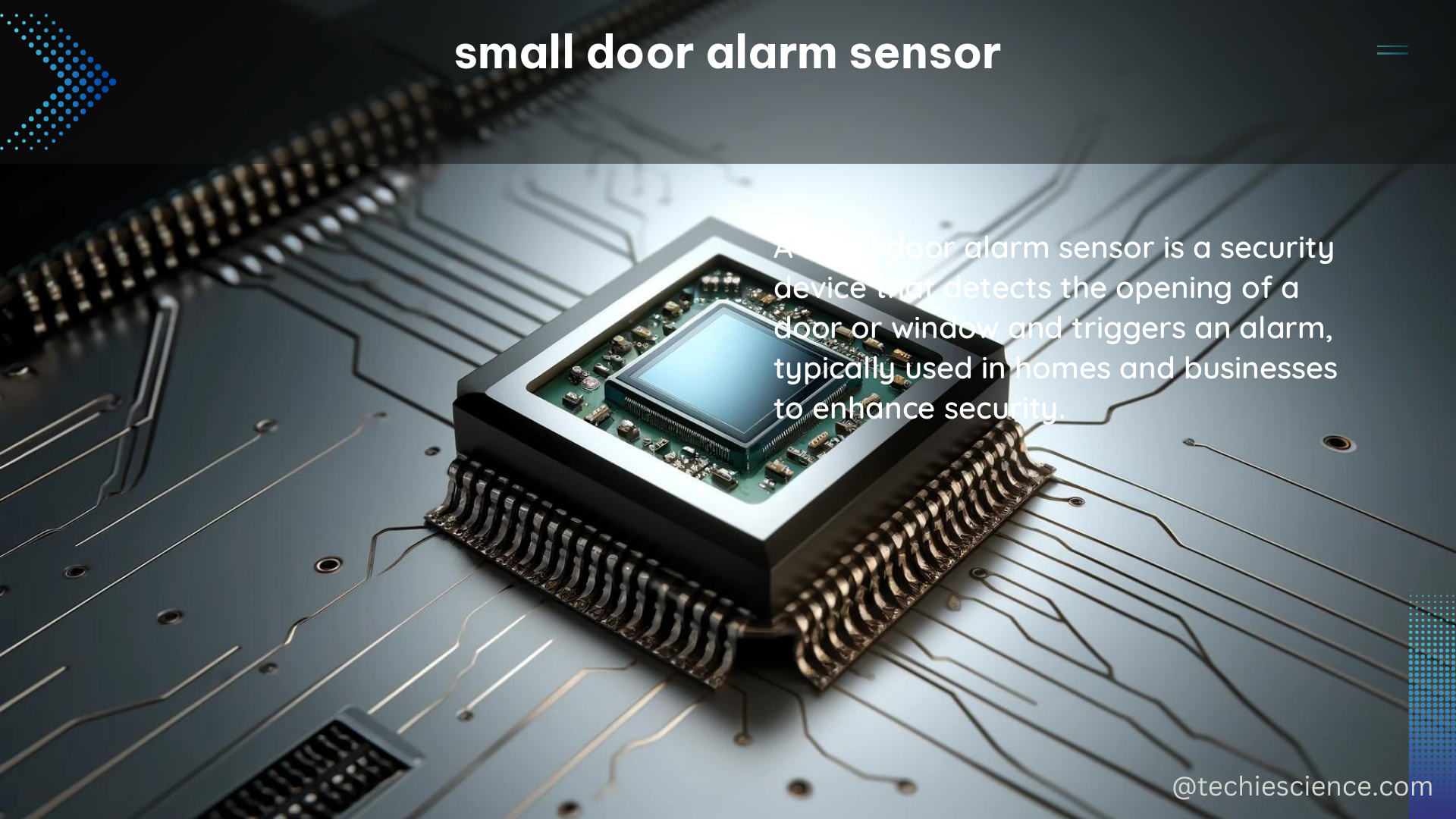A small door alarm sensor is a crucial security device designed to detect and trigger an alarm when a door is opened or moved beyond a certain threshold. These sensors employ various technologies, including magnetic, infrared, and microwave, to ensure the safety and security of homes, offices, and industrial facilities.
Understanding the Technology Behind Small Door Alarm Sensors
Magnetic Sensors
Magnetic door alarm sensors work by detecting changes in the magnetic field when a door is opened. These sensors typically consist of a reed switch and a magnet. The reed switch is installed on the door frame, while the magnet is attached to the door. When the door is opened, the magnet moves away from the reed switch, causing it to open and trigger the alarm. Magnetic sensors have a detection range of up to 2.5 centimeters (1 inch) and are designed to ignore door movements of 1.2 centimeters (0.5 inch) or less to minimize false alarms.
Infrared Sensors
Infrared door alarm sensors detect changes in the infrared energy field caused by motion within the protected area. These sensors are set to trigger an alarm when the frequency difference between the transmitted and received signals exceeds a preset threshold, indicating the presence of an object or person within the monitored space.
Microwave Sensors
Microwave door alarm sensors are active volumetric sensors that emit an energy field. When motion occurs within the protected area, changes in the microwave energy field cause a Doppler frequency shift. The sensor processes the difference between the transmitted and received frequencies, triggering an alarm if the frequency difference exceeds a preset threshold. Microwave sensors typically operate in the X band RF region (7 to 11 gigahertz) with low power output and can detect motion up to 30 meters (approximately 98.4 feet) away.
Factors to Consider When Selecting a Small Door Alarm Sensor

When choosing a small door alarm sensor, it is essential to consider the following factors:
- Detection Range: Magnetic sensors have a detection range of up to 2.5 centimeters (1 inch), while microwave sensors can detect motion up to 30 meters (approximately 98.4 feet) away.
- Power Consumption: Some sensors require batteries, while others are connected to an external power source. Power consumption can vary between models.
- Environmental Factors: Temperature, humidity, and other environmental conditions can affect sensor performance, so it is crucial to select a model suitable for the intended environment.
- Ease of Installation: Some sensors require professional installation, while others are designed for DIY installation.
DIY Small Door Alarm Sensor Project
For a DIY small door alarm sensor project, magnetic sensors are a simple and effective option due to their ease of installation. To create a basic magnetic door alarm sensor, you will need the following components:
- Magnet
- Reed switch
- Buzzer or alarm module
The reed switch is placed on the door frame, while the magnet is attached to the door. When the door is opened, the magnet moves away from the reed switch, causing it to open and trigger the alarm.
To ensure the proper functioning of your DIY small door alarm sensor, consider the following:
- Placement: Ensure the magnet and reed switch are aligned correctly and within the detection range of 2.5 centimeters (1 inch).
- Sensitivity: Adjust the sensitivity of the reed switch to minimize false alarms while still detecting door openings.
- Power Source: Determine whether the sensor will be battery-powered or connected to an external power source.
- Alarm Integration: Connect the reed switch to a buzzer or alarm module to trigger the alarm when the door is opened.
Conclusion
Small door alarm sensors are essential for ensuring the security of homes, offices, and industrial facilities. By understanding the different technologies behind these sensors and considering factors such as detection range, power consumption, environmental factors, and ease of installation, you can select the most suitable option for your needs. For a DIY project, magnetic sensors offer a simple and effective solution.
References:
– Sensor Technologies for Intrusion Detection Systems
– Intrusion Detection Systems
– Metrics for Effective Physical Security
– Intrusion Detection Systems for Physical Protection
– DIY Door Alarm System

The lambdageeks.com Core SME Team is a group of experienced subject matter experts from diverse scientific and technical fields including Physics, Chemistry, Technology,Electronics & Electrical Engineering, Automotive, Mechanical Engineering. Our team collaborates to create high-quality, well-researched articles on a wide range of science and technology topics for the lambdageeks.com website.
All Our Senior SME are having more than 7 Years of experience in the respective fields . They are either Working Industry Professionals or assocaited With different Universities. Refer Our Authors Page to get to know About our Core SMEs.